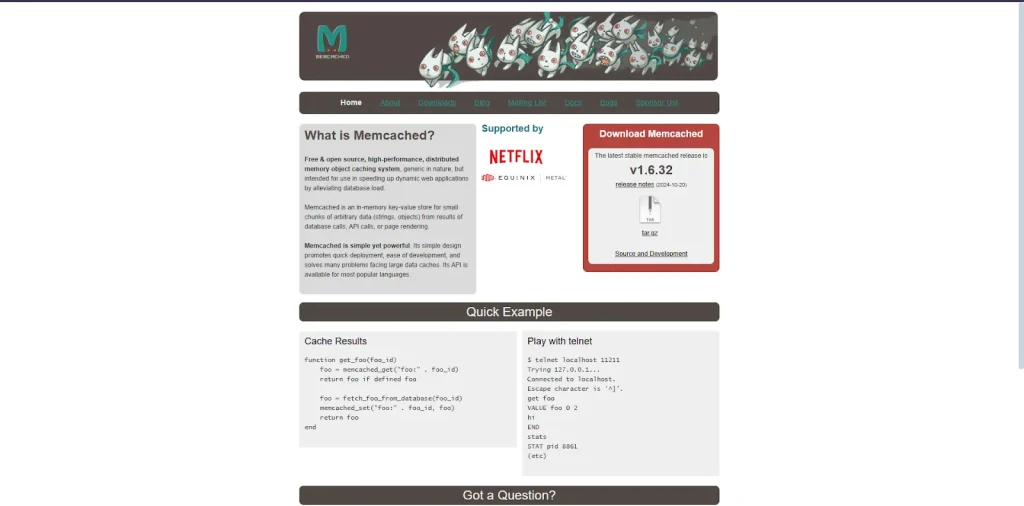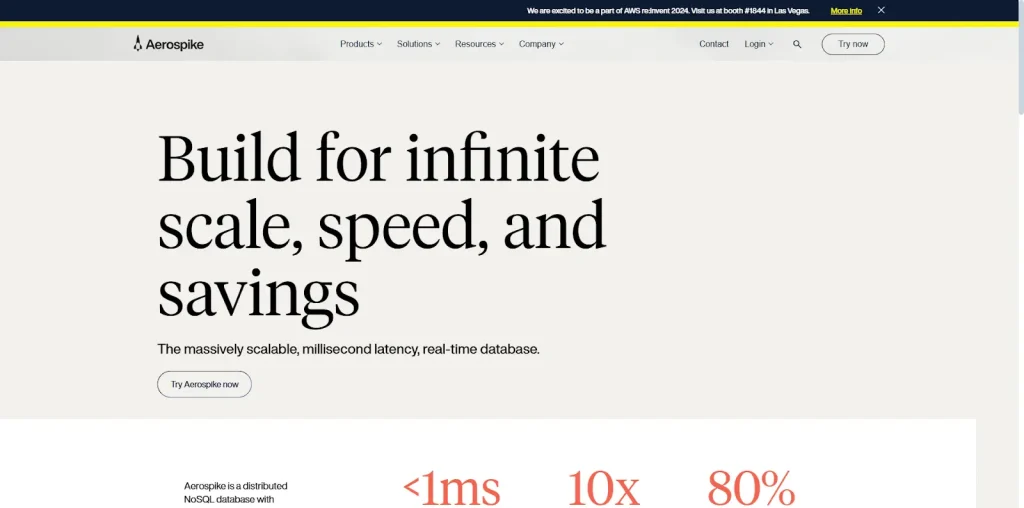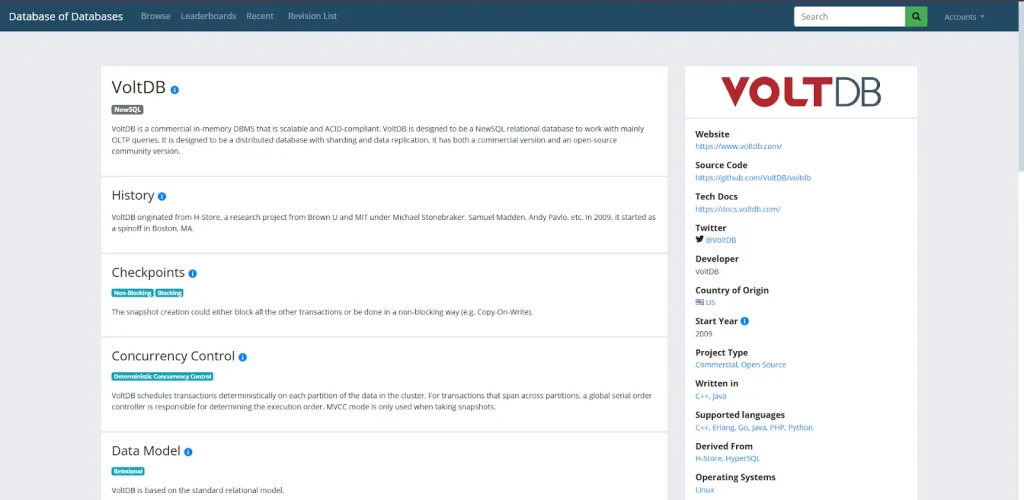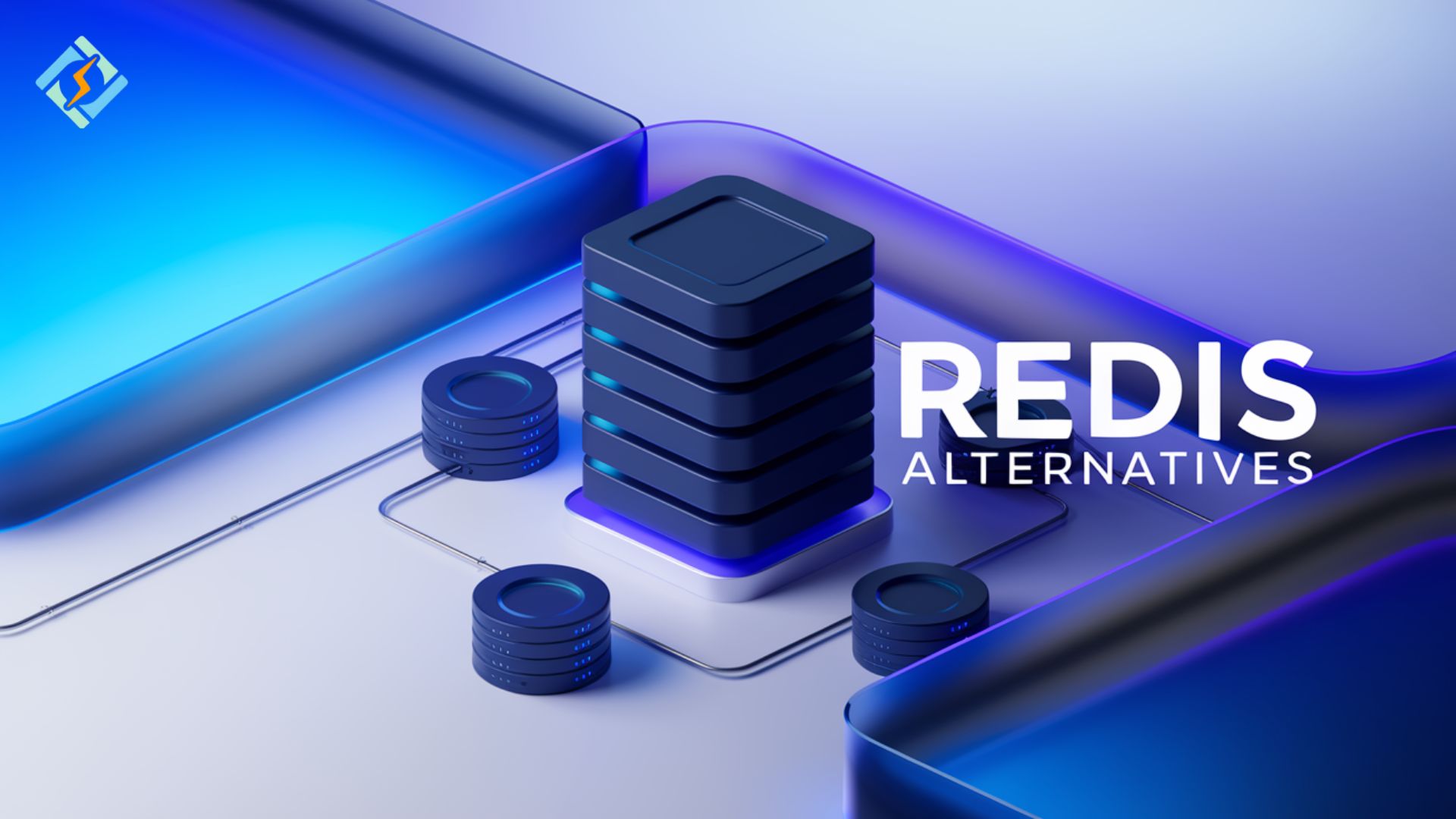Redis has been a highly reliable and efficient solution for developers looking for an in-memory data structure store for years. Its capabilities in caching, session management, and real-time analytics have placed it at the top rung of ideal choices for all sorts of applications. With all these, one might think Redis is good for every situation, but that is not the case in every scenario. Its single-threaded nature, and cost make Redis look less palatable to businesses and developers in search of an alternative.
This is a comprehensive guide to Redis alternatives. It has closely examined the specific features, use cases, and benefits of each of them. For anything on cost-effectiveness, greater elasticity, and most interestingly, features specifically tailored towards particular workloads, this article should make your decision less uncertain.
Why Go For Redis Alternatives?
Redis is a great software, but just like anything else, it has limitations that may force users to keep looking for alternatives. Here are some of the reasons why there are alternatives to Redis:
Performance Bottlenecks:
Redis uses a single-threaded architecture. Though this makes implementation easier and debugging simpler, performance may be affected under conditions of highly concurrent workloads. Applications that have requirements for multi-threading usually opt for something else.
Scalability Problems:
Get exclusive access to all things tech-savvy, and be the first to receive
the latest updates directly in your inbox.
The horizontal scaling of Redis is complicated. Scaling datasets or traffic beyond a threshold can lead to the need for more Redis clusters to be managed efficiently, perhaps requiring additional expertise and infrastructure.
Existing Storage Requirements:
Although Redis does have persistence capabilities via snapshots and append-only files (AOF), its strength remains in being an in-memory database. Applications more concerned with durability than speed would likely choose another approach.
Costs:
The free open-source version of Redis can be prohibitive to the enterprise edition or cloud-hosted Redis services as applications scale.
Specialized Use Cases:
Redis does not offer such advanced features in certain use cases, like complex querying, multi-model data handling, and distributed computing.
Key Considerations When Choosing Alternatives to Redis
In selecting an alternative to Redis, the following considerations apply:
Data Model: Does your application need key-value and document-based storage, or something more?
Scalability: Will the solution manage growing traffic and data volume effectively?

Performance: How will the solution perform under different workloads, such as read-heavy or write-heavy scenarios?
Durability: Are there enough forms of data persistence and fault tolerance?
Ease of Integration: How easily does the solution fit into your infrastructure and technology stack?
Top Redis Alternatives
Here is an in-depth analysis of the top Redis alternatives, features, and where to apply them.
1. Memcached: The Lightweight Caching Solution

Overview:
Memcached finds its place among the simplest and fastest tools for caching, hence most of the read-heavy applications depend on it.
Key Features:
- The Memcached utilizes the key-value data storage model.
- The multi-threaded architecture supports concurrent request handling.
- Open source and easy to install.
Use Cases:
- Improving the speed of your web application using data cache, especially for frequently accessed data.
- Relieving database traffic because query results can directly be retrieved from memory.
Why Memcached Over Redis?
It is lightweight and simple. It is handy when memory-hungry applications require basic caching.
It supports multi-threaded mode, and it is much more efficient than Redis in some read-heavy scenarios.
It cannot store complex data structures. In the case of some simple tasks, it outperforms Redis.
2. Couchbase: Distributed Beyond Caching

Overview:
Couchbase is a NoSQL database that offers both cache and database functionalities. It can perform complex queries with high availability for real-time applications.
Features
- The document-oriented storage supports JSON documents.
- N1QL is the query language to query data, and it is very much like SQL.
- Multi-model support, allowing applications to handle various data structures.
Use Cases
- User sessions management for high-traffic websites and applications
- E-commerce platforms that need real-time inventory updates and user personalization.
Why Go for Couchbase Over Redis?
- It offers more advanced querying functionalities, therefore good for applications that need analytics and reporting.
- It has a distributed architecture with high availability and scalability over several data centers.
3. Aerospike

Overview
Aerospike is for ultra-low latency and high throughput applications. In this way, it merges the power of in-memory storage using the cost-effectiveness of persistent storage, and hybrid memory architecture.
Features
- Multi-threaded architecture to provide superior performance in concurrent environments.
- Optimized for SSD-based storage, ensuring durability without sacrificing performance.
- Auto-scaling for seamless performance under heavy loads.
Use Cases:
- Fraud detection systems in banking and financial services.
- Real-time bidding systems in advertising technology.
Why Use Aerospike over Redis?
- It can handle massive amounts of data and is excellent with write-heavy workloads.
- Hybrid architecture ensures that it is durable and cost-efficient.
4. Apache Ignite: In-Memory Computing Platform

Overview:
Apache Ignite is a distributed data platform to handle large-scale in-memory computing and caching purposes.
Features
- Support for SQL queries and ACID transactions.
- Distributed computing capabilities to process large datasets in real time.
- Persistent storage options for in-memory and disk-based hybrid use cases.
Use Cases
- Real-time analytics in applications including IoT and big data processing.
- Distributed session storage in a microservices architecture.
Why Apache Ignite Over Redis?
- Ideal for applications that require advanced computing capabilities and distributed data processing.
- It supports complex queries using SQL, so more versatile.
5. Hazelcast: In-Memory Data Grid

Overview:
Hazelcast is a data grid that supports distributed caching, stream processing, and real-time data handling.
Features:
- Built-in replication for fault tolerance and high availability.
- Integration with modern cloud-native ecosystems, including Kubernetes.
- Stream Processing and Real-Time Event Handling.
Use Cases:
- Distributed session management for scalable web applications.
- Data synchronization across microservices in a distributed environment.
Why Choose Hazelcast Over Redis?
It is built for enterprise-grade applications and has robust fault tolerance.
Highly scalable and perfectly compatible with the latest generation of cloud platforms.
6. KeyDB: Redis-Compatible Database – Threaded

Overview:
KeyDB is a drop-in replacement for Redis that brings in multi-threading. It is very much suitable for high-performance applications since it shares compatibility with Redis commands and APIs.
Features:
- Multi-threaded architecture is used for high-concurrency workloads
- Totally compatible with Redis APIs and commands
- Seamless migration from Redis with no code changes
Use Cases:
- Applications that require high-speed caching involving Redis-like features
- Real-time data processing high concurrency environments.
Why Choose KeyDB Over Redis?
- It provides enhanced performance while retaining Redis’s simplicity.
7. DynamoDB

Overview:
DynamoDB is designed for serverless applications and offers effortless scaling.
Features:
- Serverless architecture, removing the need for infrastructure management.
- Automatic scaling to handle fluctuating traffic.
- Multi-region replication for global applications.
Use Cases:
- Low-latency, persistent storage, which serverless web applications require.
- Reliable and scalable databases for e-commerce platforms.
8. Etcd:

Overview:
etcd is a distributed key-value store primarily used for configuration management and service discovery. However, etcd, in conjunction with other elements, is very fundamental to cloud-native environments, especially in Kubernetes clusters, in the management of state and metadata.
Features:
- Distributed and fault-tolerant.
- Has strong consistency using the Raft consensus algorithm.
- Supports watching, allowing for real-time monitoring of key-value pairs.
Use Cases:
- Service discovery and configuration storage for microservices architecture
- Metadata management of container orchestration systems like Kubernetes.
Why Prefer Etcd to Redis?
It’s specifically designed for distributed environments with strong consistency guarantees.
For metadata store rather than cache on service discovery, for example
9. RocksDB: High-Performance Embedded Database

Overview
RocksDB is an embedded key-value store based on LevelDB that is optimized for storage on Flash with high performance. The database supports low-latency access to large datasets.
Features
- Optimized for flash and SSD storage.
- Tunable consistency levels for diverse application needs.
- Multi-threaded for high-concurrency workloads.
Use Cases:
- Storage Engine for Applications That Need Efficient Usage of SSDs.
- Embedded Database for Applications That Require Fast Local Storage.
Why use RocksDB over Redis?
- Quite effective for deeply embedded use cases that require tight integration with application logic.
- Offers better persistence capabilities for applications requiring high-speed, reliable storage.
10. VoltDB

Overview:
VoltDB is an in-memory, ACID-compliant database that can efficiently solve fast transactional processing and real-time analytics. In other words, it combines the performance of an in-memory database with strong consistency and durability features.
Features:
- Supports SQL for complex queries and analytics.
- Strong replication and durability with built-in capabilities.
- Scalable architecture to handle large data volumes.
Use Cases:
- High-speed transaction processing for financial services and telecommunications.
- Real-time analytics in IoT and big data platforms.
Why Choose VoltDB Over Redis?
- It provides robust ACID compliance for applications requiring consistency.
- Suitable for workloads consisting of high-speed transaction mix with analytics.
How to Choose the Right Redis Alternative
Choosing the right Redis alternative requires a thorough understanding of your application requirements:
Type of Workload:
- Simple, lightweight caching: Memcached or KeyDB.
- Analytic processing, more complex analytics processing: Apache Ignite or Aerospike.
Scalability Requirements:
- Scalability ‘out of the box’: DynamoDB or Couchbase.
Performance Needs:
- High-rate data access: Hazelcast or Aerospike.
Cost:
- Open-source choices such as Memcached and Apache Ignite will save money.
Role of CyberPanel in Redis Alternatives

CyberPanel, a next-generation web hosting control panel that powers its operations on OpenLiteSpeed, is a strong platform for managing databases and caching mechanisms and alternative solutions like Redis. CyberPanel provides perfect integration and management capabilities with a wide array of Redis alternatives and can be used to optimize performance, scalability, and security in modern web applications. Its very user-friendly interface makes configuration, monitoring, and troubleshooting of caching and database solutions easy to do.
Whether you’re using Memcached for simple caching or Couchbase for scalable document storage, CyberPanel ensures compatibility and easy deployment, allowing businesses to manage their data architecture effectively.
FAQs on Redis Alternatives
1. What are the best Redis alternatives for caching?
The top Redis alternatives for caching are Memcached, Hazelcast, and KeyDB. They provide lightweight, high-performance solutions for storing key-value pairs.
2. Why should I look for Redis alternatives?
Alternatives to Redis, such as Couchbase or Apache Ignite, provide a set of distinctive features that either Redis itself does not support or supports in an incomplete manner. Among these are JSON support, ACID compliance, and in-memory computing.
3. Can CyberPanel handle Redis alternatives?
Yes, it supports multi-caching and DB solutions, providing a friendly interface for configuration, monitoring, and optimization.
4. Is Memcached better than Redis?
Well, the former is very simple and ideal for basic caching needs, while Redis supports data persistence and complex data structures.
5. Which Redis alternative is best for real-time analytics?
VoltDB and Aerospike are especially optimal for real-time analytics due to the nature of in-memory architecture and speedy transaction processing.
6. Are Redis alternatives cost-effective?
Many alternatives to Redis, including RocksDB and Etcd, are open source. This automatically makes them a cost-effective choice for developers and their businesses.
7. How Does CyberPanel Help in Using an Alternatives to Redis?
CyberPanel offers seamless integration with caching and database tools, ensuring hassle-free deployment, performance monitoring, and scalability for Redis alternatives.
Culmination: Empower Your Web Hosting with the Right Redis Alternative and CyberPanel
Choosing the right solution in terms of caching or a database is a critical decision, considering a website’s performance, scalability, and reliability. While Redis is widely popular, Memcached, Couchbase, Aerospike, and many others provide specific benefits for particular use cases-from simple caching to real-time analytics.
CyberPanel simplifies these Redis alternatives in deployment and management while proffering an intuitive interface for easy configuration and optimum performance. Whether speeding up, dealing with complex data, or making your solution scalable, CyberPanel will ensure smooth integration and monitoring of the solution implemented.
Take your web hosting to the next level now with CyberPanel! Boost your data infrastructure and enjoy unparalleled performance.



